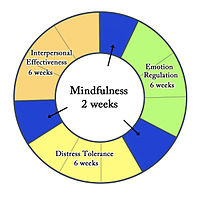
Photo from wikipedia
ABSTRACT Group-based emotions are experienced when individuals are engaged in emotion-provoking events that implicate the in-group. This research examines the complexity of group-based emotions, specifically a concurrence of positive and… Click to show full abstract
ABSTRACT Group-based emotions are experienced when individuals are engaged in emotion-provoking events that implicate the in-group. This research examines the complexity of group-based emotions, specifically a concurrence of positive and negative emotions, focusing on the role of dialecticism, or a set of folk beliefs prevalent in Asian cultures that views nature and objects as constantly changing, inherently contradictory, and fundamentally interconnected. Study 1 found that dialecticism is positively associated with the complexity of Chinese participants’ group-based emotions after reading a scenario depicting a positive intergroup experience. Study 2 found that Chinese participants experienced more complex group-based emotions compared with Dutch participants in an intergroup situation and that this cultural difference was mediated by dialecticism. Study 3 manipulated dialecticism and confirmed its causal effect on complex group-based emotions. These studies also suggested the role of a balanced appraisal of an intergroup situation as a mediating factor.
Journal Title: Cognition and Emotion
Year Published: 2017
Link to full text (if available)
Share on Social Media: Sign Up to like & get
recommendations!